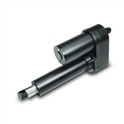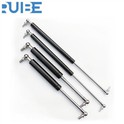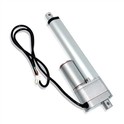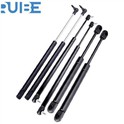Hey there! As a supplier of Mini Linear Actuators, I've gotten tons of questions about how the peak force stacks up against the continuous force of these nifty little devices. So, I thought I'd break it down in this blog post.
First off, let's quickly explain what a Mini Linear Actuator is. It's a compact device that converts rotational motion into linear motion. You can find these in all sorts of applications, from small robotics projects to adjusting the position of delicate instruments. They're super handy because of their size and the precision they offer.
Now, onto the main topic - peak force vs. continuous force. Peak force is the maximum amount of force that the Mini Linear Actuator can generate for a short period. This is usually when the actuator is starting up, stopping, or dealing with a sudden load. It's like when you're sprinting; you can exert a whole lot of force for a short burst, but you can't keep it up forever.
On the other hand, continuous force is the amount of force the actuator can maintain over an extended period. Think of it as a long - distance run. You can't go as fast as a sprint, but you can keep a steady pace for a long time.
So, why does this difference matter? Well, in many applications, understanding the peak and continuous force is crucial for ensuring the actuator works correctly and doesn't break down.
Let's say you're using a Mini Linear Actuator in a Linear Actuator for Door Opener. When the door is initially opening or closing, there might be some resistance, like a small misalignment or a bit of friction. The actuator needs to have enough peak force to overcome this resistance and get the door moving. But once the door is in motion, it only needs to maintain a certain continuous force to keep the door moving smoothly.
If you choose an actuator with a peak force that's too low, the door might not open or close properly. And if the continuous force is too low, the actuator could overheat or wear out quickly trying to keep the door moving.
Another example is in a Linear Actuator for Solar Tracker. When the tracker needs to reposition quickly to follow the sun, it requires a high peak force. But once it's in the right position, it only needs to maintain a small continuous force to hold its place.
Now, how do we measure these forces? Manufacturers usually provide specifications for both peak and continuous force. However, it's important to note that these values can be affected by various factors.
One of the biggest factors is the speed of the actuator. Generally, as the speed of the actuator increases, the available force decreases. So, if you want your actuator to move quickly, you might have to sacrifice some force.
Temperature is another factor. Higher temperatures can reduce the efficiency of the actuator, which means it might not be able to generate as much force. This is especially important in applications where the actuator is exposed to the elements, like in solar trackers.
The duty cycle also plays a role. The duty cycle is the ratio of the time the actuator is operating to the total time. If the duty cycle is high, meaning the actuator is running for long periods without breaks, the continuous force might be lower because the actuator has less time to cool down.
When choosing a Mini Linear Actuator, you need to consider your specific application requirements. If your application has sudden, high - load situations, you'll need an actuator with a high peak force. But if it's a more constant - load application, continuous force is more important.
Let's take a look at some real - world scenarios to understand this better. Suppose you're working on a small automated assembly line. There are parts that need to be moved quickly into position and then held in place for a while. In this case, you'd need an actuator with a high peak force to move the parts quickly and a sufficient continuous force to hold them in place.
Now, as a Mini Linear Actuator supplier, I can tell you that we've spent a lot of time researching and developing our products to optimize both peak and continuous force. Our actuators are designed to provide the right balance for a wide range of applications.
We use high - quality materials and advanced manufacturing techniques to ensure that our actuators can handle high peak forces without sacrificing continuous force. And we test our products rigorously to make sure they meet or exceed the specified force values.
![]()

If you're in the market for a Mini Linear Actuator, whether it's for a door opener, a solar tracker, or any other application, I encourage you to get in touch. We can help you choose the right actuator based on your specific needs. You can explore our Electric Linear Actuator options on our website to get an idea of what we offer.
We understand that every project is unique, and we're here to provide personalized solutions. Whether you need a custom - designed actuator or just some advice on choosing the right one, our team of experts is ready to assist you.
In conclusion, understanding the difference between peak force and continuous force in a Mini Linear Actuator is essential for successful applications. By considering your specific requirements and working with a reliable supplier, you can ensure that your actuator performs optimally and lasts a long time. So, don't hesitate to reach out if you have any questions or if you're ready to start your next project with a high - quality Mini Linear Actuator.
References
- "Linear Actuator Handbook" - A comprehensive guide on linear actuators and their performance characteristics.
- "Engineering Principles of Motion Control" - Covers the basic principles of motion control, including force and speed relationships in actuators.






